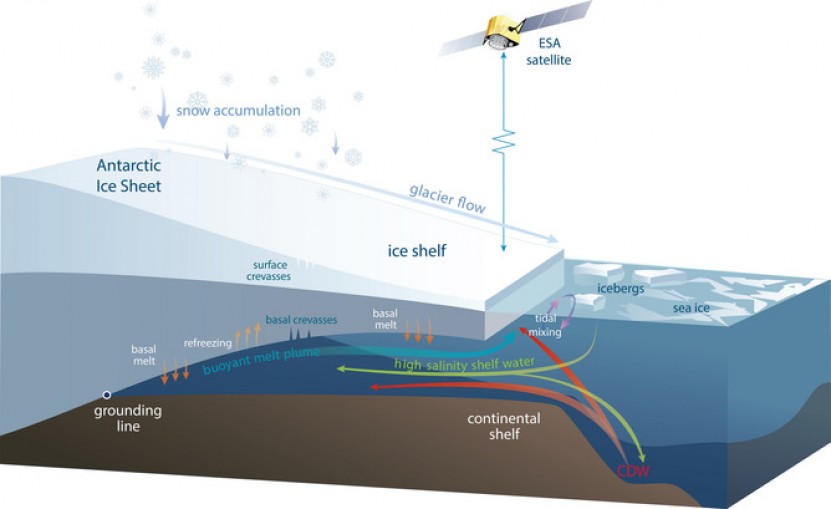Shrinking of Antarctic ice shelves is accelerating

There’s so much ice on Antarctica that if it all melted into the ocean, average sea level around the entire world would rise about 200 feet, roughly the height of a 20-story building.
Could this happen? There’s evidence that at various times in the past there was much less ice on Antarctica than there is today. For example, during an extended warm period called the Eemian interglacial about 100,000 years ago, Antarctica probably lost enough ice to raise sea level by several meters.
Scientists think that global average temperature back then was only about two degrees Fahrenheit warmer than today. Assuming we continue to burn fossil fuels and add greenhouse gases to the atmosphere, global temperature is expected to rise by at least two degrees Fahrenheit by 2100. What will that do to Antarctica’s ice sheet? Even one meter of worldwide sea level rise – that is, melting only a fiftieth of the ice sheet – would cause massive displacements of coastal populations and require major investments to protect or relocate cities, ports and other coastal infrastructure.
Ice leaving Antarctica enters the ocean through ice shelves, which are the floating edges of the ice sheet. We expect that any changes to the ice sheet caused by changes in the ocean will be felt first by the ice shelves. Using satellite data, we analyzed how Antarctica’s ice shelves have changed over nearly two decades. Our paper published in Science shows that not only has ice shelf volume gone down, but losses have accelerated over the past decade, a result that provides insight into how our future climate will affect the ice sheet and sea level.
Read more here http://theconversation.com/shrinking-of-antarctic-ice-shelves-is-accelerating-39273



